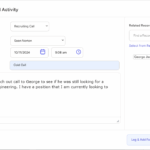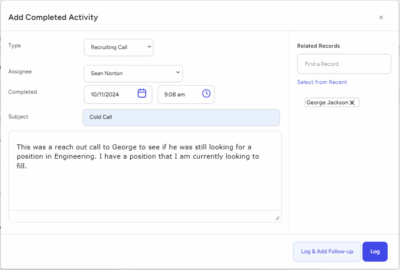I have found over the years that when it comes to recruiting candidates, most big billers prefer to begin with the indirect approach (“Who do you know?”) and then transition to the direct approach (“How about you? What would interest you in making a move?”).
But you know what? Both approaches work. Use one or the other or both, depending upon your comfort level. It really doesn’t matter. Only the results matter.
When you ask whom the prospect might know who’s qualified, they will invariably answer that they don’t know anyone who would be interested in making a move. They simply change your operative word from “qualified” to “interested”—that change in words you can’t allow and must correct. Tell them that you appreciate them thinking about people who might be interested in making a move, but that you want to speak with those who are qualified.
Then you will determine who are the best matches for your job order. Your job is like unwinding a giant ball of string. You will eventually reach the end. You will eventually find the right candidate.
Next, especially if the candidate is interested, they will ask you three questions:
- “What is the name of the company?”
- “Where is it located, geographically speaking?”
- “What is the salary range?”
These are all “editing out” questions, and you must avoid answering them. Don’t let the prospect make these “editing out” decisions. You will do that. Here are your answers to those three questions:
- “This is a confidential search, and I can’t give out that information right now. Just trust that it is one of the leading corporations in their niche.”
- “Actually, we have various locations. One is (where the position is located), but we have various locations around the U.S.”
- “I am so glad you asked me that question. My client wants me to help them determine the range. Based on what I have told you so far, what do you, as one of your niche’s experts, feel the range should be?” Then, whatever the prospect answers, you agree with and then ask again who they know who is qualified and who you can speak to.”
And finally the last question—and it’s a biggie:
“Who told you to call me?” or, “Where did you get my name and number, etc.?”
Here is your answer. It’s a two-parter:
- “You know, I make so many calls on a daily basis that I frankly don’t remember, although I keep everything confidential, anyway.”
- “But I can tell you two things. First of all, it was very complimentary about you or I wouldn’t have tried to reach you. And second, it was no one from your company because I have never called your company before.”
They can now breathe easy realizing that they are not being “out-placed” and you are not the harbinger of that fate. They will now talk to you.
The bottom line of the two approaches to recruiting candidates:
Indirect positives—You get better cooperation and you get referrals.
Indirect negatives—It’s longer and you can be seen to be “beating around the bush.”
Direct positives—It’s short and you are saying what you mean.
Direct negatives—The potential recruit will “edit out” people to recommend to you who might compete with them for the position down the road, and you can create egomaniacs by making the potential recruit feel too special.
— — —
Bob Marshall of TBMG International, founder of The Marshall Plan, has an extensive background in the recruiting industry as a recruiter, manager, vice president, president, consultant, and trainer. In 2015, Bob is celebrating his 35th year in the recruitment business. Marshall can be reached at bob@themarshallplan.org or at 770.898.5550. His website is www.themarshallplan.org.









